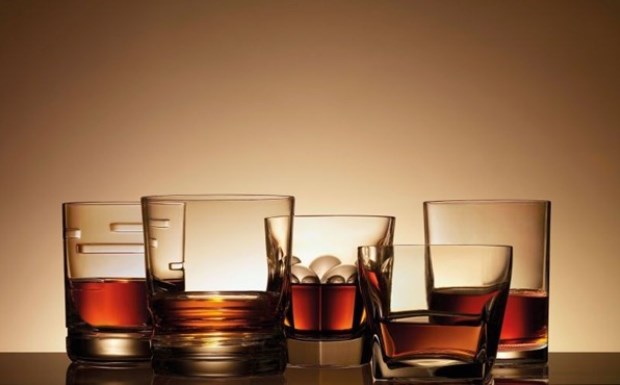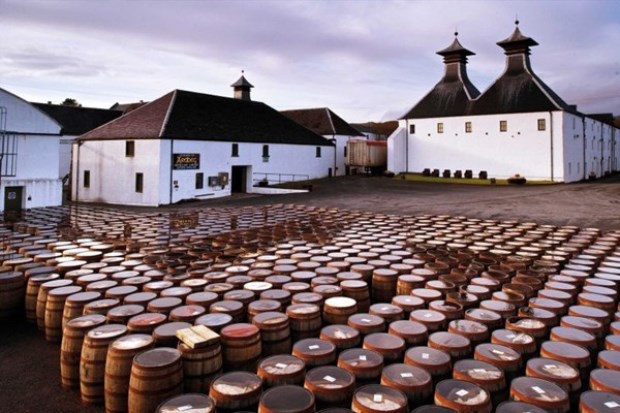More Scottish distilleries are doing away with age labels on whiskey bottles. How will this affect their value?
A youthful rebellion is quietly taking place amid the staid world of single malt Scotch whisky.
For decades, few products have been so successfully defined by age as single malts crafted in Scotland. Even if you had no clue what the difference was between a Highlands or Islay whisky, one quick scan of a label was enough to provide a reassuring sense of instant expertise. Surely that 18-year-old bottle had to be better than the 12, which must be worth more than the 10?
Now a significant number of Scottish distilleries are in effect saying that equating age with taste and value is a contrivance, perfectly understandable in the past, but increasingly out of sync with 21st century technologies and consumers. The result is a slew of no-age-statement (NAS) single malts, a rather dry name that basically means that you have little idea how old the whisky is other than it has met the minimum three year maturation in oak casks as spelled out by Scottish law.
Implying that age really doesn’t matter is a tricky balancing act for an industry that has parlayed a mystique of sophistication into a multi-billion-dollar business. Not surprisingly, the move is meeting some skepticism particularly since lack of age statement typically does not translate into a lower price tag.
“World demand has meant that stocks are under pressure,” says John Lamond, author of Whisky: Instant Expert and The Malt Whisky File. “There are two reasons for the move to no-age-statement single malts. One is that stocks are getting tight at 12- or 15-year-olds (age-stated whiskies), and, two, they (distilleries) are seeing what they can get away with.”
According to official government figures, the value of Scotch whisky exports almost doubled between 2002 and 2012, with Singapore jumping to the number three market. That demand spells opportunity but also challenge since to brand their drink as Scottish whisky distillers must follow rigid rules that make cranking up production tough. Once you run out of 15-year-old Scotch, there simply is no way to replace it.
Most casual drinkers are unfamiliar with whisky’s regulatory maze. The vast majority of Scotch whisky sold is designated “blended” meaning that whiskies from multiple distilleries have been mixed together (but all must be wholly distilled and matured within Scotland). The “single” in single malt Scotch whisky means simply that it is the product of one distillery, and not, as commonly believed, from a single barrel. Single malt can—and usually does—consist of multiple batches blended together.
Herein enters the age statement. “Putting on the age (on a label) is the choice of each distillery. If the age is quoted, the age on the bottle must be that of the youngest spirit in the bottle,” says Gillian Macdonald, head of analytics and whisky creation for Glenmorangie. Founded in 1843, this Highlands distillery produces both NAS and age-specified single malts, and is now owned by the Louis Vuitton Moet-Hennessy Group (LVMH). As Macdonald explains, if a cask of 10-year-old whisky is combined with a cask of 8-year-old, then the bottle must be labeled 8-year-old if an age is quoted.
Thus NAS single malts often, but not always, are the blend of younger spirits than has been the norm. Therefore distillers are carefully navigating the charge that NAS is simply a short cut to market.
“There is a perception from some in the public that someone is trying to pull the wool over their eyes,” acknowledges Simon Brooking, North American brand ambassador for the Laphroaig, Teacher’s and Ardmore whisky brands, which were acquired in January by Suntory Holdings. “Yes, we are in the first wave of it, and there will be confusion as we move through it. Does this mean the end of age whiskies? No. There will be a range. It is our job to educate our audience.”
Started 200 years ago on the Isle of Islay, Laphroaig’s colorful history includes cofounder Donald Johnston purportedly dying by falling into a vat of partially made whisky. The distillery’s product range includes 10-, 18- and 25-year-old whisky, but it is increasingly promoting its Quarter Cask and Triple Wood NAS single malts.
Quarter Cask is blended from 5- to 11-year-old whiskies, and then spends up to eight months in small barrels that allow the whisky more contact with flavour-imparting wood. Triple Wood is a Quarter Cask whisky that matures an additional two years in sherry casks. If Laphroaig opted to use age statements then legally both would be labeled 5-year-old single malts.
Consequently Brooking believes there is more at the heart of the NAS explosion: “It’s really about bottling to a flavour profile,” he says.
Flavour is key, agrees Gregor Mina, brand director for Ardbeg, another highly regarded Islay distillery that was founded in 1815 and now part of LVMH. While the Ardbeg 10-year-old is the “core and flagship expression in the Ardbeg range,” Mina says, in recent years the distillery launched several NAS products including its Uigeadail and Corryvreckan lines. “The number on the front of a bottle is not a definition of quality—only age,” he remarks.
“I am sure that some producers use NAS whisky as a way to alleviate stock gaps, however at Ardbeg, we produce our expressions to flavour and nothing else,” Mina says. Referring to Uigeadail’s “luscious flavours” of dried fruits, toffee and smoke, he adds: “This expression carries no age-statement as it is always created to a particular flavour profile. Casks are selected based on flavour components not age.”
Demand issues aside, history, production improvements, and taste evolution all play a role in expanded NAS marketing, experts say. For starters, age statements are essentially a 20th century phenomenon, particularly after World War II when there was a big push for Scottish distilleries to come back on line. “By the 1960’s there was literally a ‘whisky lake’ in Scotland—so much was available,” Brooking says, so age statements and single malts were promoted to distinguish products.
“In some ways we shot ourselves in the foot,” Brooking adds. “Older whiskies are rarer, that’s absolutely true, but the connotation that older is better I don’t necessarily agree with.”
“It is certainly true that a lot more of the whisky available today carry no age statements,” says Jamie MacKenzie, head of sales in the Americas for Morrison Bowmore Distillers. “There are a couple of main reasons for that and Morrison Bowmore Distillers is an example.” Based in Glasgow and owned by Suntory, MBD oversees Auchentoshan, Bowmore, Glen Garioch, and McClelland’s distilleries.
“As a testament to the financial support of Suntory, we’ve been able to invest a significant amount of money that allows us to lay down whisky in better condition casks that produce better whisky at younger ages,” MacKenzie says. “Going back, whisky would have to mature over a longer time to mellow or reach an acceptable maturation.”
For example, Auchentoshan’s new American Oak NAS single malt is matured exclusively in first fill ex-bourbon casks. “We’re not using casks three, four, five times as would have been the common practice years ago,” adds MacKenzie. “So the whiskies that are being matured are more expressive.”
Other distillers echo the importance of cask quality. Ardbeg’s Mina estimates that as much as 60 per cent of a whisky’s flavour comes from the cask’s wood. Thus the type, size and repetitive use of a cask greatly affect a whisky’s character.
Glen Moray is a Speyside distillery in Elgin, Scotland. It produces 12- and 16-year-old single malts, but has offered its Classic NAS for more than a decade. “A high proportion of first fill ex-bourbon barrels are used to mature the Classic, allowing it to be enjoyed at a younger age,” says Iain Allan, Glen Moray Visitor Centre manager. Long a champion of NAS single malt, the distillery is expanding the line. “To some extent the consumer will look at age as a signifier of price and quality,” Allan remarks, so “we like to try and educate that younger malts can be fantastic products also.”
To roll out NAS products, Lamond says that distilleries are targeting the travel market, such as duty free shops, particularly since these consumers tend to be wealthier. Certainly on two recent visits to whisky retailers at London’s Heathrow Airport it was striking to see how much inventory had quickly shifted from age-statement offerings to NAS.
For example, The Macallan Distillery launched its 1824 Collection in travel retail, its first full range without an age statement, according to director Ken Grier. Today it accounts for approximately 15 per cent of Macallan sales and has allowed the Speyside distillery to grow its market share, he says.
Auchentoshan and Bowmore also have travel retail specific whiskies. “This channel has proven to be extremely popular since consumers want to try things not available in their domestic market,” says MacKenzie. “We take the opportunity to gauge feedback but we don’t tend to view it as a test channel.”
But change appears inevitable, particularly since younger drinkers seem more adventurous. “We’re finding consumers’ perception that age is a benchmark of quality has really shifted the past few years,” says MacKenzie. “For the new kind of consumer there is less significance for whisky to have an age statement. They are more into taste.”
“At Laphroaig, the distillery staff is 31 people,” remarks Brooking. “Today the notion of handcrafted and artisanal is popular, and you can’t get more handcrafted than 31 people on an island.
“The challenge for us as a distillery: we are producing as much liquid as we can,” Brooking adds. “Demand is only going higher. Unlike vodka, which you and I could make today and drink tomorrow, we must look much farther down the road.”


